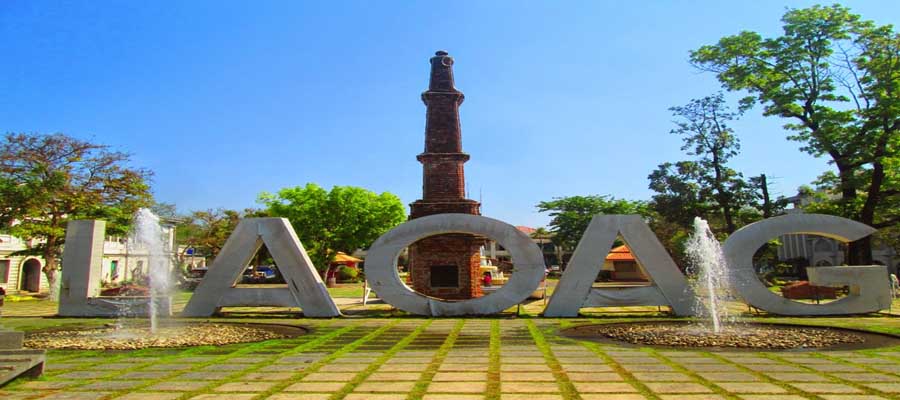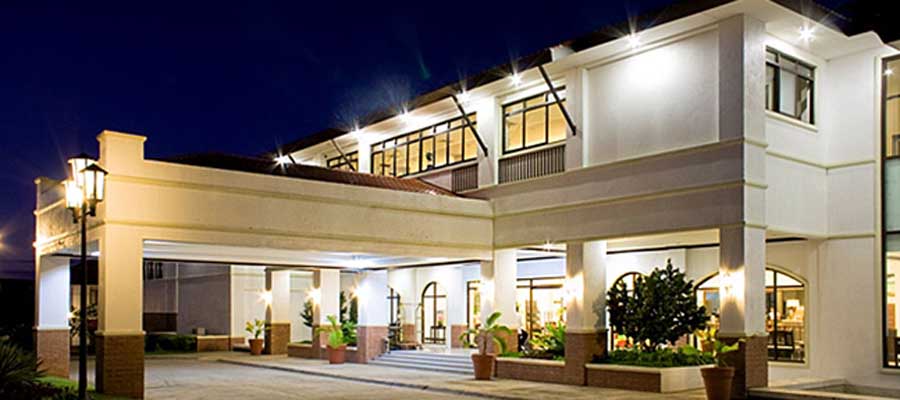Hotels Laoag

Home > Philippines > Hotels Laoag
At the arrival of the Spaniards in the Philippine Islands, they found out that the natives were divided into community groups, each living its own independent government. That there were centers of population as was observed by Captain Juan de Salcedo, Ilocos was extra ordinary in size. In Laoag alone, the population reached as high as 6,000. This was the greatest number of inhabitants in a “barangay” or “puroc” in the whole country at the advent of the Spaniards. The houses of the natives, made of bamboo and cogon numbered to no less than a thousand. These were built and compactly arranged around a hill known as “Ermita Hill”, located at the Southeastern section of what Laoag is now at the very brim of the northern bank of the Padsan River. The natives must have chosen this spot for the location of their community not only of its proximity to the river which is indispensable to them as source of their protein, that is fish,, shellfish, and water for drinking and washing. Buzeta, commenting on the practice of the Ilocanos in constructing their houses very close to one another, that no space was left for their orchards contrary to the common practice of the natives in their places of island who constructed their houses isolated on the fields adjacent to their farms.
The late Don Luis Montilla, who for several years, was Director of the National Library (now the Rizal Centennial Commission) unquestionable documents in the National Archives which mention 1580 as the real date of the organization of Laoag as a parish under the Patronage of St. William, the Hermit, whose feast is celebrated on the 10th of February of every year.
The inhabitants of Ilocos Norte at the arrival of Salcedo were a sturdy and industrial race predominantly Malay. The first wave of Malay Immigrants to the Philippines came back abut 200 to 300 B.C. These immigrants were the less civilized Malays – ancestors of the Igorots, Ifugaos, Bontocs and Tinguians of Northern Luzon.
The second wave came after the Christian Era, beginning about the first century A.D. and continuing through the succeeding centuries until the 13th century. These migratory waves saw the advent of the alphabet using Malays – ancestors of the present Ilocanos, Tagalogs, Visayans, Bicols, Pampangos, and other Christian Filipinos. To these better civilized Malays belonged the Ilocanos that Salcedo found in the Ilocos in 1572.
The Spaniards found the inhabitants of Ilocos with distinctive peculiarities in character and culture. They looked very similar to the Tagalogs with faded hair, big eyes, olive-like color, flat nose and with very thin beard or none at all. However, they spoke a different dialect that, although belonging to a common tongue as the Tagalogs, had required certain modifications and idiosyncracies making the Ilocano dialect quite different from the Tagalog.
Though Laoag was converted into a city in 1965 through a plebiscite, leaving its municipal status, it remained the capital of Ilocos Norte. The first city mayor was Hon. Eulalio F. Siazon.
Home > Philippines > Hotels Laoag
Philippine Hotels by Destination | Mariposa Travel Facebook Page
| Country | Philippines |
|---|

